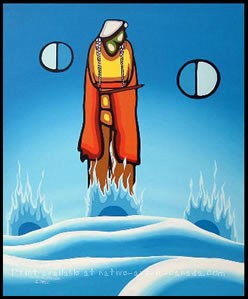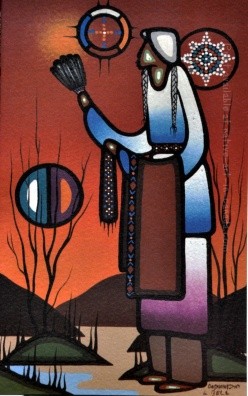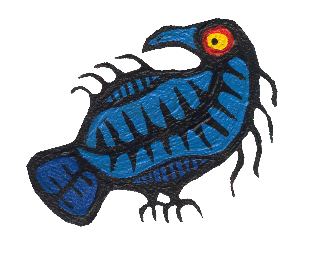Native-Art-in-Canada has affiliate relationships with some businesses and may receive a commission if readers choose to make a purchase.
- Home
- Native Artists
- Leland Bell
Leland Bell
Among the Second Wave of Woodland Artists

Leland Bell is Anishinabe from the Wikwemikong Unceded First Nation on Manitoulin Island. He is Loon Clan and a second degree member of the Three Fires Midewiwin Society.
Leland was one of the young men mentored by members of the Indian Group of Seven at the Manitou Arts Foundation,
a summer school that operated on Schreiber Island in 1972. He was
deeply inspired by the work of the Woodland artists and with the help of
elders has made the connection between the Anishnabe concept of vision
quest and his own committment to living life as a good being.
Leland Bell's paintings are of stylized human figures sharing the
affinity of family or friends, often depicting imagery of nurturing,
sharing, learning, peace and serenity.
"My art comes from the Three Fires (or Midewiwin) tradition. That is what I believe in. I came to this belief through a dream I had about peace. It was a deeply spiritual experience. After consulting with Elders I began trying to build my sense of spirituality. Then I needed to have an Indian name. I consulted with some elders and asked them to help me find my name. I was given the name Bebaminojmat which, loosely translated, means, 'when you go around you talk about good things'. Then I fasted to prepare my body and my mind to talk to the Creator. This is where my art comes from.
The Symbolism Used by Leland Bell

"The circle is central to our tradition. The Creator sits in the East. Yellow is the colour for that direction; the sacred herb is tobacco; the animal is the eagle. Red is the colour of the South which is the place of all young life, of the little animals; the sacred plant is cedar. The West is the place of life; it's colour is black and the sacred medicine is sage. All the healing powers come from the North; its colour is white; sweetgrass comes from there; and that is where the sacred bear sits. "The Circle is what my paintings are based on. The rounded lines are deliberate ... what I create is something simple and serene and peaceful."
All the paradigms that sustain his creativity exist within his Anishinabe culture. He says that he absorbs what he needs and discards what he doesn't need from other cultures and is committed to remain Anishinaabe.
In the same manner that the first wave of Woodlands artists contributed to his life, Leland Bell has also been an art instructor and has conducted numerous workshops and presentations across the continent.
Bebaminojmat's work is represented in many prominent art collections in North America and Europe.
Leland Bell's limited edition prints and art cards will be available soon on this page.

Return to Native Artists
or return to Indian Group of Seven Influence





